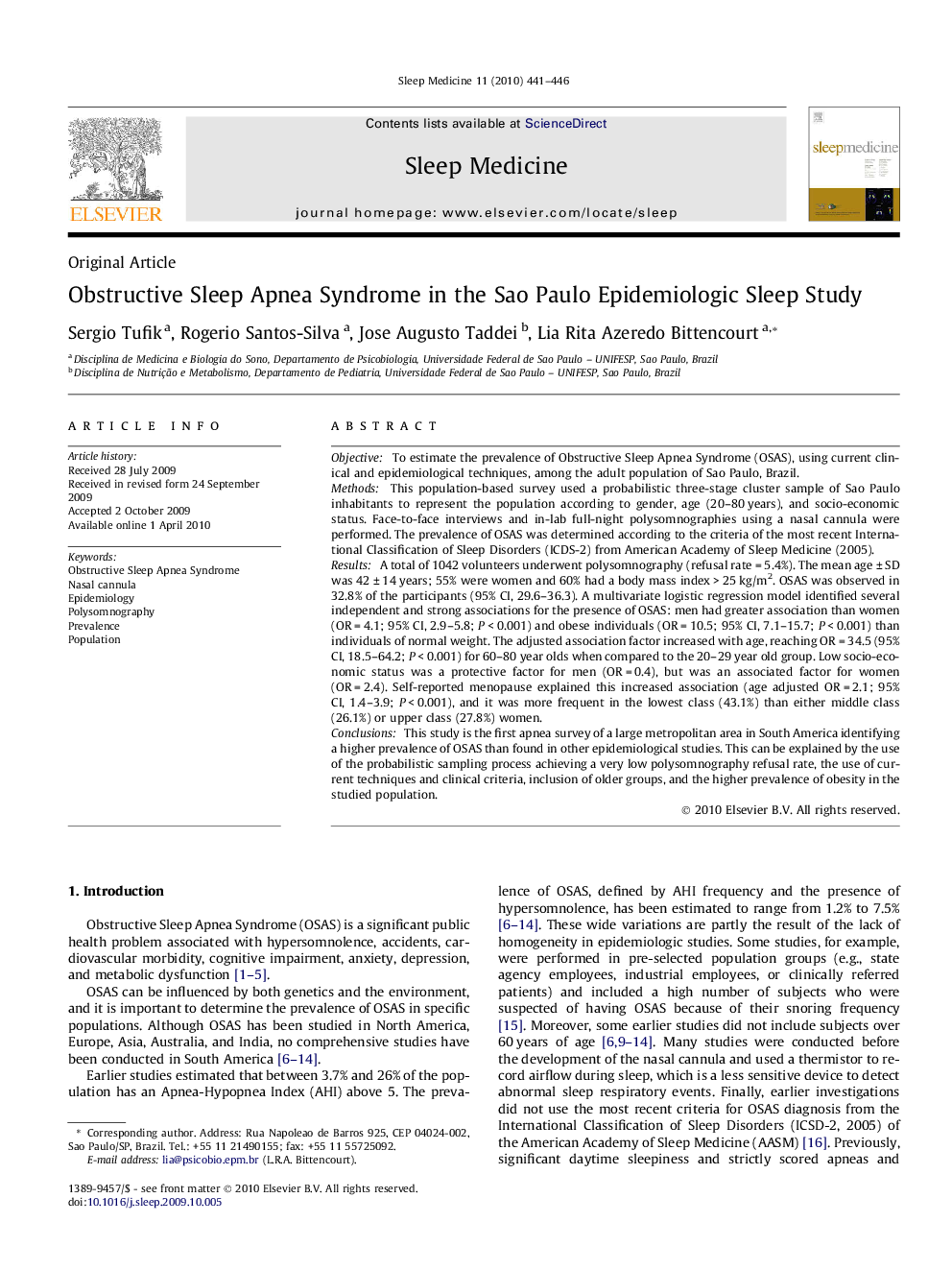| کد مقاله | کد نشریه | سال انتشار | مقاله انگلیسی | نسخه تمام متن |
|---|---|---|---|---|
| 3177330 | 1200297 | 2010 | 6 صفحه PDF | دانلود رایگان |

ObjectiveTo estimate the prevalence of Obstructive Sleep Apnea Syndrome (OSAS), using current clinical and epidemiological techniques, among the adult population of Sao Paulo, Brazil.MethodsThis population-based survey used a probabilistic three-stage cluster sample of Sao Paulo inhabitants to represent the population according to gender, age (20–80 years), and socio-economic status. Face-to-face interviews and in-lab full-night polysomnographies using a nasal cannula were performed. The prevalence of OSAS was determined according to the criteria of the most recent International Classification of Sleep Disorders (ICDS-2) from American Academy of Sleep Medicine (2005).ResultsA total of 1042 volunteers underwent polysomnography (refusal rate = 5.4%). The mean age ± SD was 42 ± 14 years; 55% were women and 60% had a body mass index > 25 kg/m2. OSAS was observed in 32.8% of the participants (95% CI, 29.6–36.3). A multivariate logistic regression model identified several independent and strong associations for the presence of OSAS: men had greater association than women (OR = 4.1; 95% CI, 2.9–5.8; P < 0.001) and obese individuals (OR = 10.5; 95% CI, 7.1–15.7; P < 0.001) than individuals of normal weight. The adjusted association factor increased with age, reaching OR = 34.5 (95% CI, 18.5–64.2; P < 0.001) for 60–80 year olds when compared to the 20–29 year old group. Low socio-economic status was a protective factor for men (OR = 0.4), but was an associated factor for women (OR = 2.4). Self-reported menopause explained this increased association (age adjusted OR = 2.1; 95% CI, 1.4–3.9; P < 0.001), and it was more frequent in the lowest class (43.1%) than either middle class (26.1%) or upper class (27.8%) women.ConclusionsThis study is the first apnea survey of a large metropolitan area in South America identifying a higher prevalence of OSAS than found in other epidemiological studies. This can be explained by the use of the probabilistic sampling process achieving a very low polysomnography refusal rate, the use of current techniques and clinical criteria, inclusion of older groups, and the higher prevalence of obesity in the studied population.
Journal: Sleep Medicine - Volume 11, Issue 5, May 2010, Pages 441–446